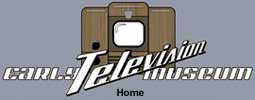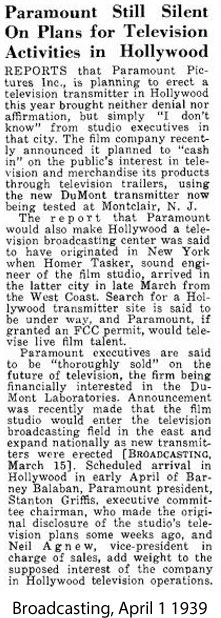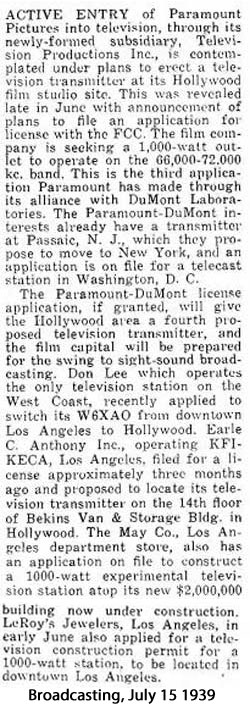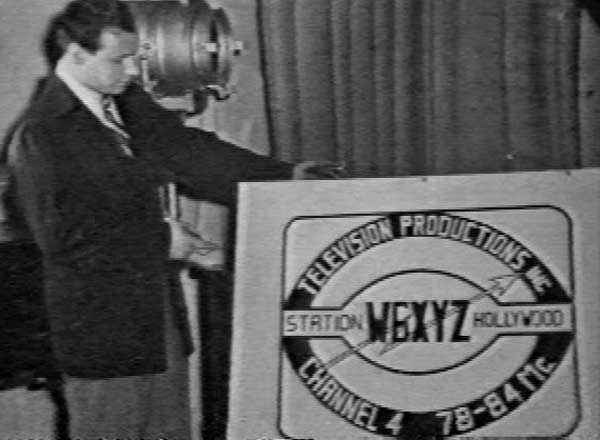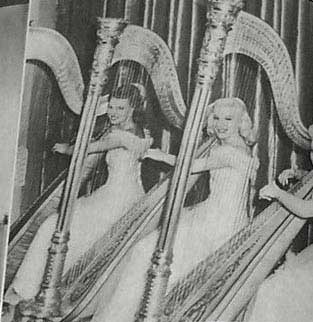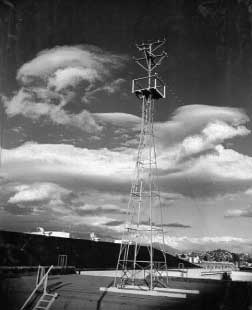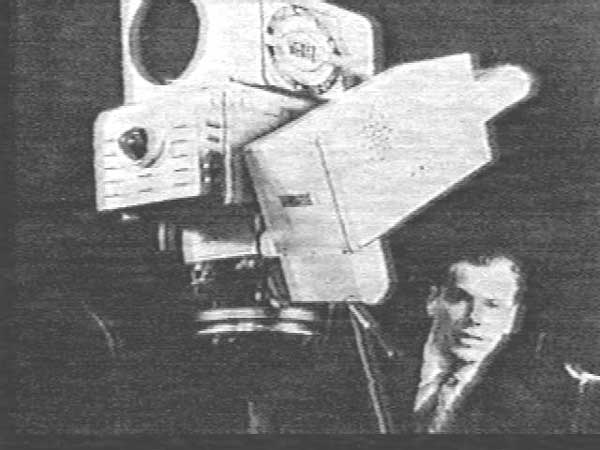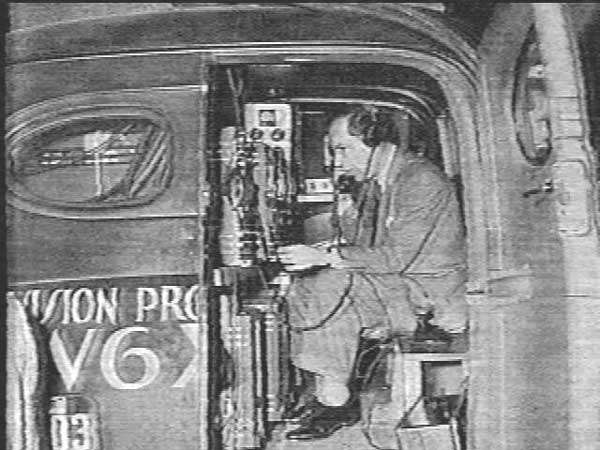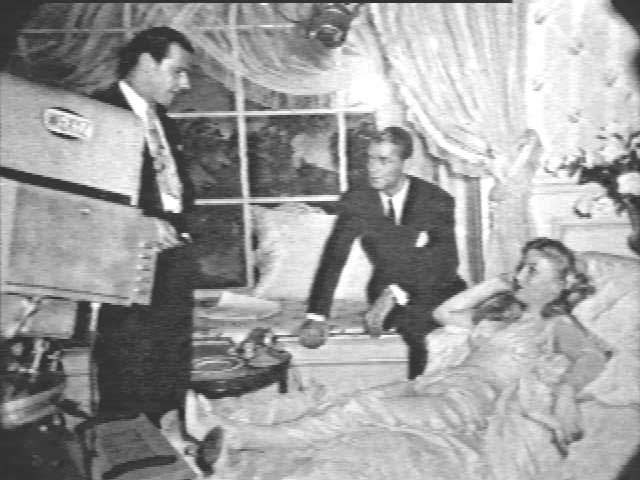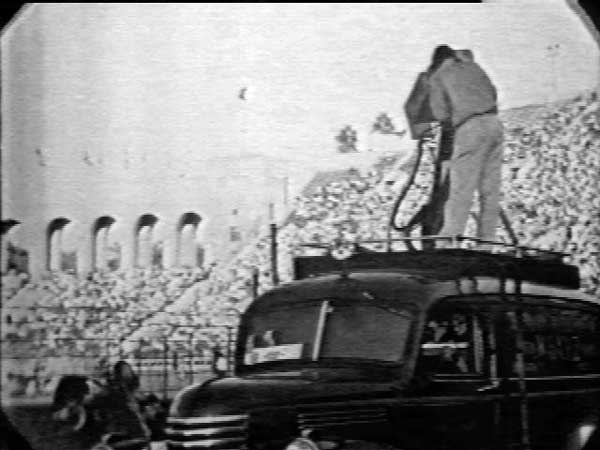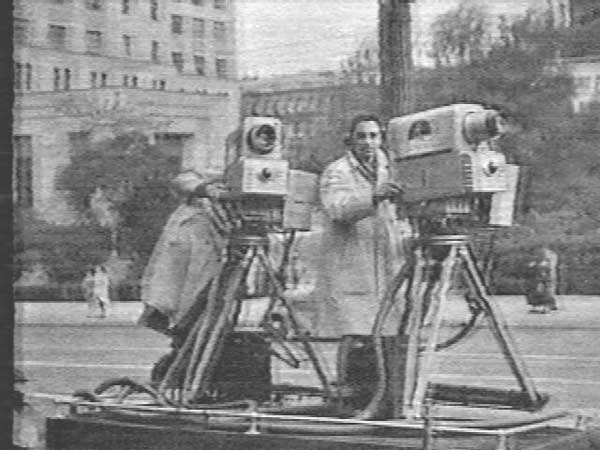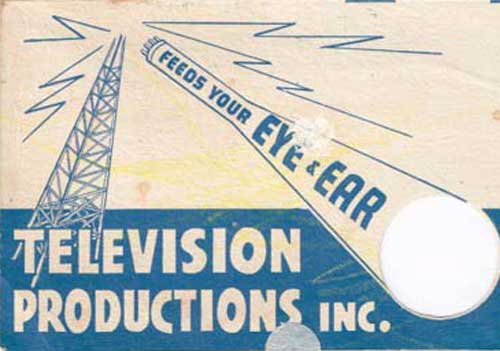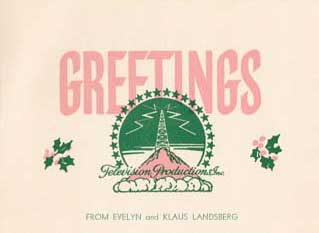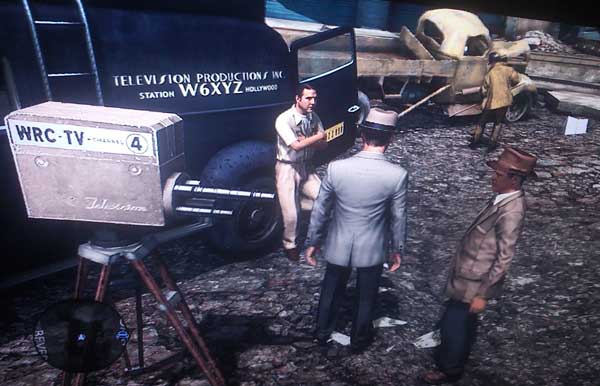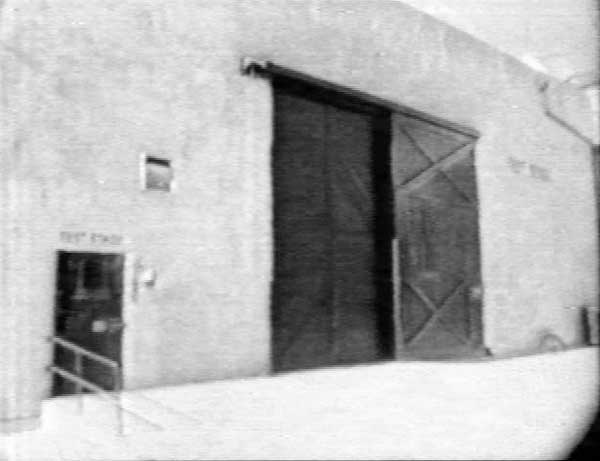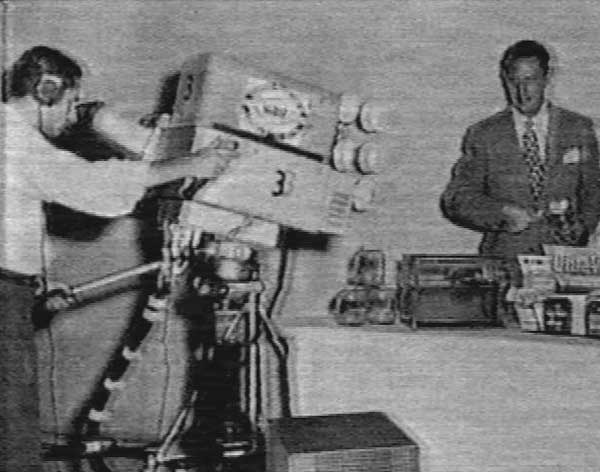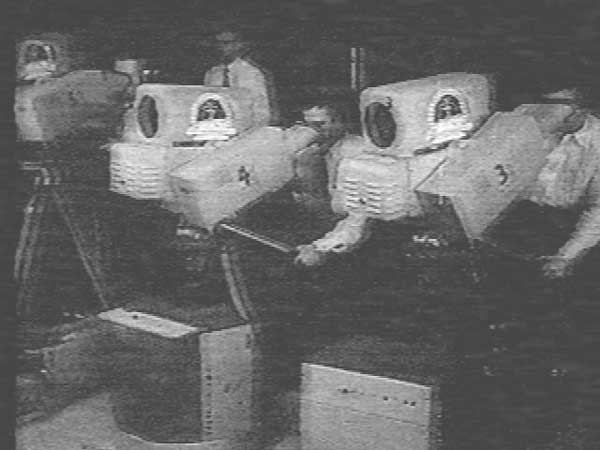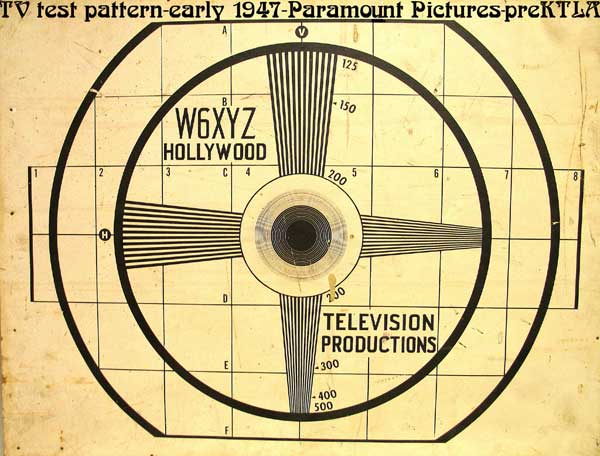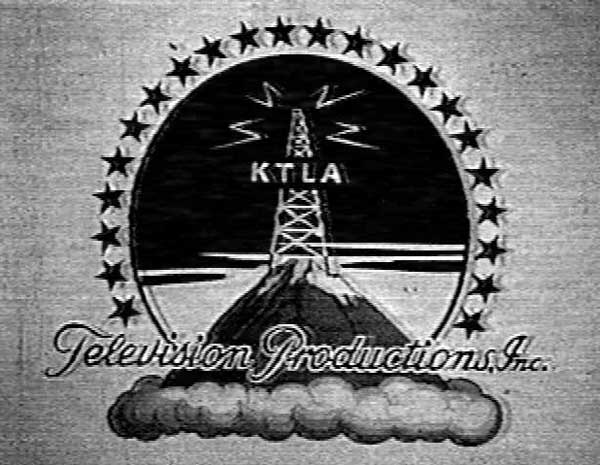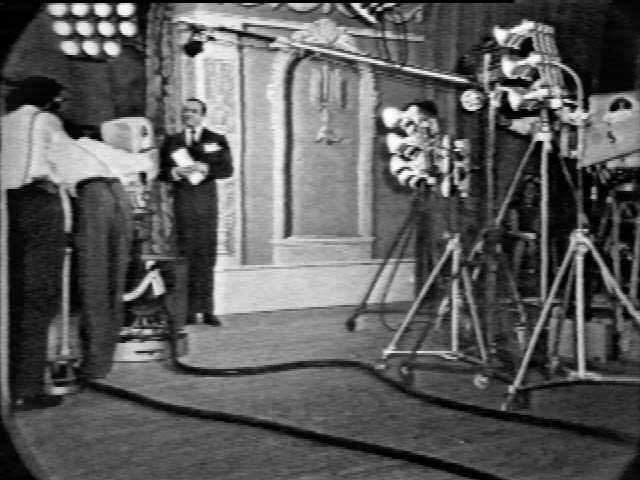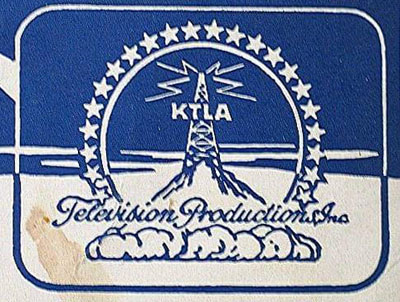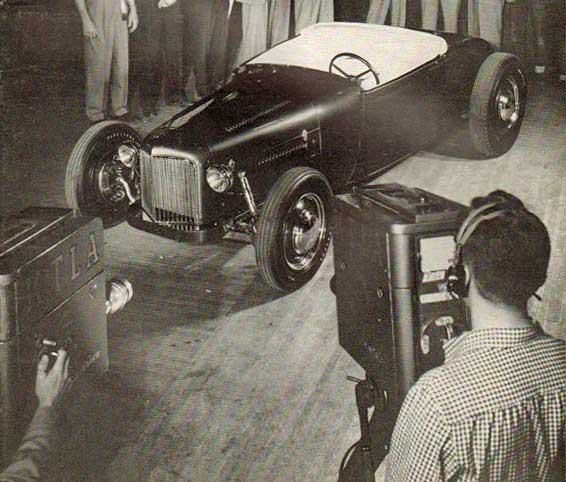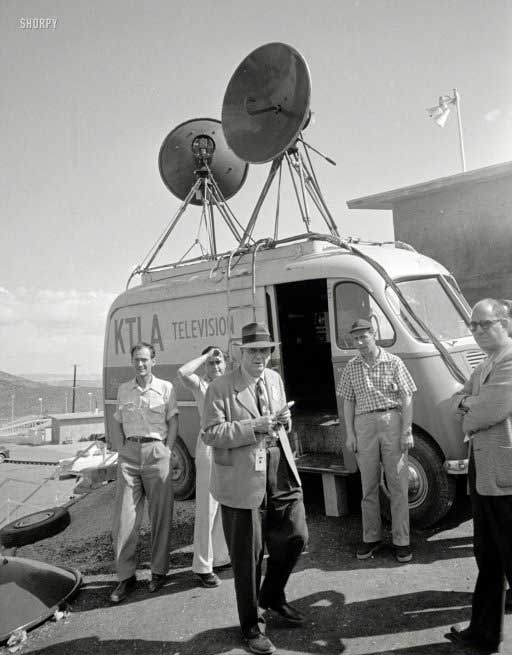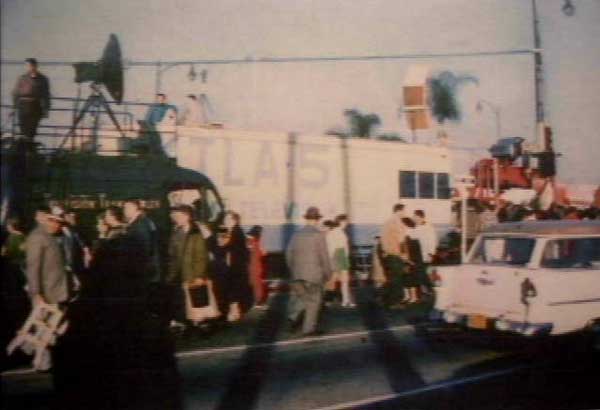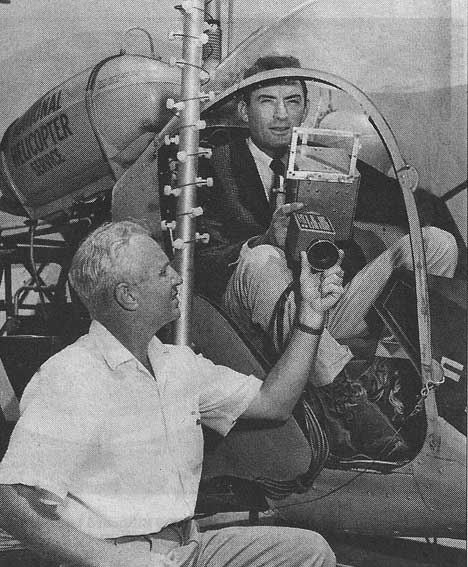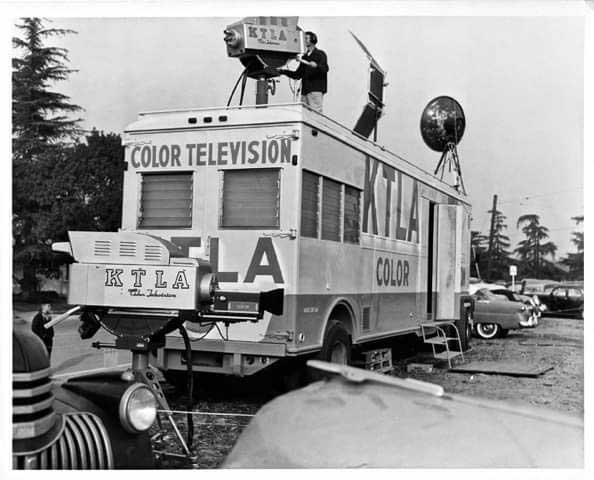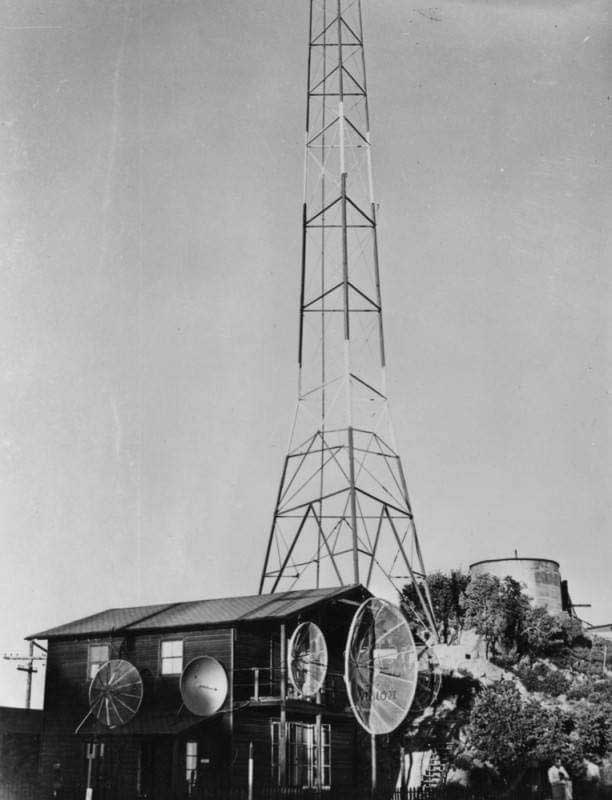Early Television W6XYZ Hollywood (KTLA)W6XYZ received its construction permit in 1939, and went on the air in 1942. It was owned by Paramount Pictures, who hired Klaus Landsberg, a refugee from Hitler's Germany, to put the station on the air. Landsberg worked on televising the 1936 Berlin Olympics. Farnsworth Television hired him as television development engineer in Philadelphia in 1938, shortly after he arrived in the United States. In 1939 he went to New York to work for the National Broadcasting Company television division. It was during this period that Landsberg participated in NBC's introduction of TV at the 1939 New York World's Fair. Allen B. DuMont recognized Landsberg's abilities, and hired him as television design and development engineer for the New York DuMont Laboratories. Here he supervised technical operations of the television unit at the U.S. Army Maneuvers in Cantons N.Y. and developed DuMont's automatic synchronizing circuits. Paramount was a major DuMont stockholder at that time and Landsberg was sent to Hollywood to organize W6XYZ for Paramount Pictures in 1941. Landsberg brought two DuMont iconoscope cameras with him, and built the transmitter, which operated on channel 4. In 1947 W6XYZ became commercial station KTLA. W6XYZ before World War TwoSteve Dichter, a collector of early color television equipment, worked for KTLA for 16 years starting in 1965. He kindly provided these rare photographs of the early days of W6XYZ and KTLA. Here is a 4 part interview with Dick Lane, an announcer hired by W6XYZ in 1942 (courtesy of Steve Dichter).
W6XYZ logo card
Klaus Landsberg pictured with large W6XYZ logo card in 1942.
1944 remote telecast
Klaus Landsberg posed with a W6XYZ DuMont Iconoscope camera.
Klaus Landsberg, founder of W6XYZ at the controls in the W6XYZ truck. Pre-1947.
The following is from Al Germond:
Here is a screen shot from a modern video game using the W6XYZ mobile van
W6XYZ and KTLA After the War
Small sound stage, (called the "test stage"), located on the Paramount Pictures lot occupied by W6XYZ until 1947
Here is a 1947 test pattern
A 1947 sign-on after the station became KTLA. Here is the audio that accompanied the sign-on Bob Hope emcees the premier telecast of KTLA Jan. 22, 1947. A total
of
1948 Station Card Courtesy of Steve Owen
1951 remote
John Silva, the chief engineer at KTLA, was the first to use a helicopter for news coverage. In 1958 he rented a Bell helicopter and installed a camera and transmitter.
Van used to televise the 1955 Rose Bowl parade
KTLA Television transmitter located on Mt. Wilson.1949 From Geoff Schecht:
|
